Dr Nazrin Rashidova explores Ethel Barns’ work, achievements and prominence during her lifetime

Discover more Featured Stories like this in The Strad Playing Hub
’Miss Barns is in the very front rank of English violinists.’ - Musical News, Vol. 2, no.479 (1895)
World premiere recording of Ethel Barns’ Fantaisie-Trio for Two Violins and Piano
During her lifetime, Ethel Barns gained wide recognition as a violinist, pianist and composer, as attested in countless periodicals, including feature articles presented in editions of The Strand Musical (1895), The Strad (1902) and The Bystander (1907) magazines.
Between 1895 and 1925, she featured as a solo violinist and composer at the Proms, giving premières of her compositions at the Queen’s Hall. Her works were played by renowned violinists of the era, including Émile Sauret, Joseph Joachim, Fritz Kreisler and Efrem Zimbalist. Her compositions were also programmed at the Carnegie Hall in New York between 1914 and 1920. Together with her husband, Charles Philips, they founded in 1895, the Barns Philips Chamber Concert Series, which in 1901 formed its base in the Bechstein Hall (now Wigmore Hall) and ran there until 1913.
Barns’ contribution to music is gradually regaining recognition in the present day with a small selection of her works issued by the Gramophone and Victor Record Company, as well as Naxos, Albion, Delphian and ACA records. Her compositions are also featured in the syllabi of the Associated board of the Royal Schools of Music and the Trinity College of Music examination boards.
A video extract of the second movement of Barns’ Violin Sonata No.2 was recently recorded by Dr Nazrin Rashidova on the 1811 violin by Nicolas Lupot, kindly loaned by Beare Violins Ltd to feature in the ‘Stradivarius and the Golden Age of Violins and Guitars’ exhibition, currently held in the Musical Instrument Museum in Phoenix, AZ through to September 2025.
In 1902, The Strad magazine published an article written titled, ‘Chats with Eminent Violinists’, interviewing Barns recalling of her beginnings in music. Her first violin lessons were held in the School of Music in Watford with the German violinist, Alexander Karl Summer, who in turn was a student of Ferdinand David. Kummer took her to play to the renowned Hungarian violin virtuoso, Joseph Joachim, who advised her to study in Berlin. To this, however, her parents declined, and she was entered at the Royal Academy of Music in 1887 at the age of 13, where she became a pupil of Prosper Sainton until his passing in 1890.
She continued her studies at the Academy with the French 19th century violin phenomenon, Émile Sauret, who was acclaimed by some of the greatest musicians of the century including Brahms, Liszt, Tchaikovsky and Grieg. It is through my doctoral research at the Academy — where I explored Sauret through the making of a world premiere recording series of his monumental 24 Études Caprices, op.64 (issued in four volumes by Naxos), culminating in the release of a new edition, published by Edition Peters — that I continue to discover the incredible virtuosic, technical, expressive and pedagogical language and legacy Sauret passed on through his vast class of violin students.
Barns carried multifaceted qualities as in addition to the violin, she also studied the piano with Frederick Westlake and composition with Ebenezer Prout at the Academy. As noted in the 1895 edition of The Strand Musical magazine, during her studies at the Academy she received eight medals, two certificates, the Potter Exhibition Prize in recognition of her piano playing and the Hine Prize for composition. In 1892, she became a sub-Professor at the Academy and two years later, an Associate.
Her approach to the different schools of violin playing introduced to her though Kummer, Sainton and latterly Sauret, essentially shaped her expressive personality. Her main features, ‘elegance’, ‘facile’, ‘tenderness’, ‘sweetness of tone’ - show a common thread running through the type of technical and expressive capacity Sauret himself encompassed, as attested in countless reviews of his concerts.
In addition to Barns’ diverse Concerto, Sonata and Chamber music repertory, some of the virtuosic works she frequently programmed in concerts included Ernst’s Violin Concerto in F sharp minor (which was Sauret’s calling card), Lalo’s Symphonie Espagnole, Bruch’s Violin Concertos, Elgar’s La Capricieuse and Hubay’s Zephyr.
Fond of performing new works by her contemporaries, she gave the first performance of Bruch’s Russian and Swedish Folk Melodies on 3rd November 1903 at the Bechstein Hall.

Barns also premiered in the same hall, Gustav Hollander’s Violin Sonata in D minor, Op.59 with pianist, St. Quintin Downer. Hollander was the Director of the Stern’sche Konservatorium in Berlin, where Émile Sauret taught prior to his professorial appointment at the Royal Academy of Music in 1891. A couple of months following the 1911 premiere of her Fantaisie-Trio for Two Violins and Piano, which she dedicated to and performed together with Sauret - she gave a performance of Sauret’s Suite, op.68 for the solo violin in the Bechstein Hall.
The following compositions by Barns featured in the Proms in the Queen’s Hall between 1895 and 1925. In 1895, she gave the Proms premiere of her own Mazurka in G major. Two years later, she gave the world premiere performance of her Concertstück in D minor for Violin and Orchestra, with The New Queen’s Hall Orchestra, under the baton of Sir Henry Wood. This particular concert was reviewed in at least fourteen newspapers. Out of the following three songs, including ‘For thee’, Out on deep waters’ and ‘O, soul of mine’ - the latter featured in the Proms 15 times, between 1914 and 1925. ‘O, soul of mine was also performed in the Albert Hall on two occasions, in May 1914 and June 1925.
In the former 1914 concert, the famed Viennese violinist, Fritz Kreisler performed a selection of his compositions. Barns also featured as a pianist in Madame Adelina Patti’s Grand Evening Concert in the Albert Hall, in June 1896. Verdi described the infamous Italian soprano, Patti, as being perhaps ‘the finest singer who had ever lived.’
Barns’ compositions were also programmed abroad, notably in the Carnegie Hall in New York, which included the violinist, Donald McBeath performing ‘L’escarpolette’ there in May 1914. This piece was recorded in 1907 by the 20th century violinist, Misha Elman for the Gramophone Record Company:
Credit: Discography of American Historical Recordings, s.v. “Gramophone matrix 6654e. Swing song / Mischa Elman,” accessed 3 December 2024, https://adp.library.ucsb.edu/index.php/matrix/detail/300005731/6654e-Swing_song.
Another work of Barns’ to feature twice in the Carnegie Hall, — in the illustrious company of the the great Leopold Godowsky and Max Rosen — was ‘Idylle’ for the cello and piano, performed in October 1920 by May Mukle, the celebrated English cellist who collaborated with renowned musicians such as Pablo Casals, Jacques Thibaud and Lionel Tertis. Mukle recorded ‘Idylle’ in 1915 for the Victor Record Company.

‘To-day Ethel Barns heads the list of violin composers among women.’ —Arthur Elson & Everett E. Truett, Women’s Work in Music (Boston: L.C. Page & Company), 1903
‘This remarkably fine violinist [Ethel Barns] deserves to be much better known as a composer.’ — W. Wells-Harrison, ‘Modern British Music for Violin and Piano’ The Strad, 1916
Gleaned from the two quotations above, it is evident that Barns’ compositions were held in the highest regard for some time. Comprising over 125 works — including two Concertos for violin and orchestra, five Sonatas for the violin and piano, 37 songs, 20 works for the piano, over a dozen chamber works including trios and piano quintets, a Fantaisie-Trio for Two Violins and Piano and over 50 virtuosic salon works for the violin and piano — her compositional style was highly admired for ‘its seriousness, sound musicianship and simple directness’, as noted in Wells-Harrison’s article titled, ‘Modern British Music for Violin and Piano’, presented in the 1916 edition of The Strad Magazine.
The type of virtuosity depicted in reviews of Barns’ playing is in turn reflected in her compositional style. Aside from her rich harmonic language where she explores some of the most unusual, unpredictable and complex modulations, her virtuosic writing is highlighted by her specific choice of fingering and bowing indications, accompanied by expressive, articulative, dynamic detail and subtle tempo fluctuations, challenging players to experiment with micro-timing and the spacing between notes. These details point specifically to a distinctive and unobtrusive virtuosic mastery of the instrument, one that puts clarity and equanimity at the forefront of execution - modelling ways of music making that are useful and communicative today.
Published by Schott in 1912, Ethel Barns’ Fantaisie-Trio for Two Violins and Piano was commissioned by Walter Wilson Corbett, on behalf of the illustrious Worshipful Company of Musicians. The work was dedicated to her professor, Émile Sauret, with whom she gave its premiere with Percy Waller on the piano in November 1911, at the Bechstein Hall. In January 1912, the piece also featured in the first public concert of the Society of Women Musicians, of which Barns was a founding member. The 1911 edition of The Musical Times credited this composition with “the gracefulness and pleasing sentiment, characteristic of the composer’s best work.”
The world premiere video recording of this work (at the top of this article) is from a lecture recital presented on 8 November 2024 at the Royal Academy of Music, given by Dr Briony Cox Williams and Dr Nazrin Rashidova, featuring pianists Catriona Mackenzie, Thomas Scott and violinist, Rachael Kwa.
Read: All-female string quartets of the 19th and 20th centuries
Read: Who was violinist Kathleen Parlow?
Discover more Featured Stories like this in The Strad Playing Hub
The number one source for playing and teaching books, guides, CDs, calendars and back issues of the magazine.
In The Best of Technique you’ll discover the top playing tips of the world’s leading string players and teachers. It’s packed full of exercises for students, plus examples from the standard repertoire to show you how to integrate the technique into your playing.
The Strad’s Masterclass series brings together the finest string players with some of the greatest string works ever written. Always one of our most popular sections, Masterclass has been an invaluable aid to aspiring soloists, chamber musicians and string teachers since the 1990s.
The Canada Council of the Arts’ Musical Instrument Bank is 40 years old in 2025. This year’s calendar celebrates some its treasures, including four instruments by Antonio Stradivari and priceless works by Montagnana, Gagliano, Pressenda and David Tecchler.





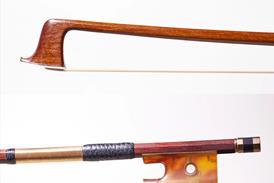

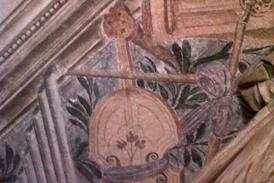




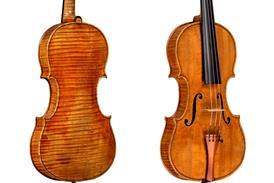

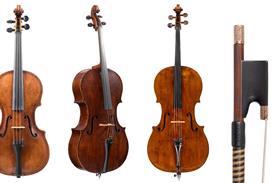






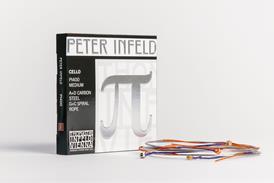
















No comments yet